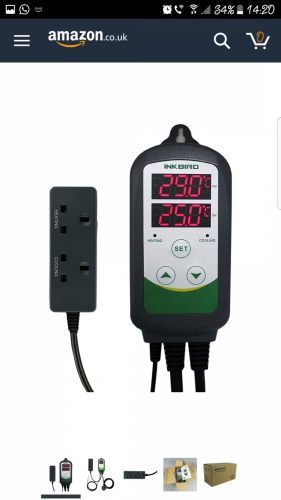Carlos spicy weiner
New Member
Hi
I bought a veiled chameleon a week past Saturday, when i got him home i let him settle a bit before feeding him when i did put in a locust he launched forward to get it but with his mouth not his tongue, he missed it and just gave up to the point of the locust walked on top of him.
He then just gave up going for anything, I know chameleons are famous for sulking when they have been moved so thought nothing of it but by Wednesday was starting to worry i contacted the seller who said there as very sulky when moved etc but to try wax worms which i did and he eat 4 in as many hours but again no tongue just grabbed from forceps with his mouth. And hasn't eaten again since, yesterday put in a dusted locust he came running to get it but again used his mouth and again missed and gave up.
He is drinking and is in the near same set up as my other chameleon apart from she is mesh but he is in a terrarium.
I've read on here can be calcium deficiency stopping his tongue from coming out but how can i fix that if he won't take dusted food?
Other factors are he was apprently born in august. But has been kept in tank in the pet shop and pretty much left and not handled so becomes aggressive when ever i open the door (he has gotten better)
Any help is greatly appreciated
I bought a veiled chameleon a week past Saturday, when i got him home i let him settle a bit before feeding him when i did put in a locust he launched forward to get it but with his mouth not his tongue, he missed it and just gave up to the point of the locust walked on top of him.
He then just gave up going for anything, I know chameleons are famous for sulking when they have been moved so thought nothing of it but by Wednesday was starting to worry i contacted the seller who said there as very sulky when moved etc but to try wax worms which i did and he eat 4 in as many hours but again no tongue just grabbed from forceps with his mouth. And hasn't eaten again since, yesterday put in a dusted locust he came running to get it but again used his mouth and again missed and gave up.
He is drinking and is in the near same set up as my other chameleon apart from she is mesh but he is in a terrarium.
I've read on here can be calcium deficiency stopping his tongue from coming out but how can i fix that if he won't take dusted food?
Other factors are he was apprently born in august. But has been kept in tank in the pet shop and pretty much left and not handled so becomes aggressive when ever i open the door (he has gotten better)
Any help is greatly appreciated


